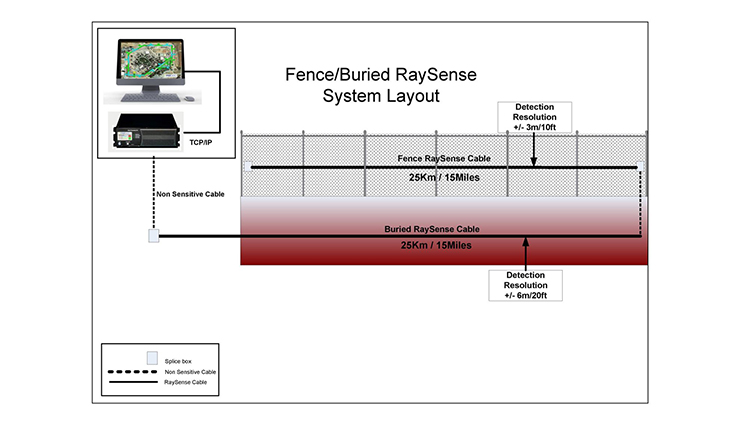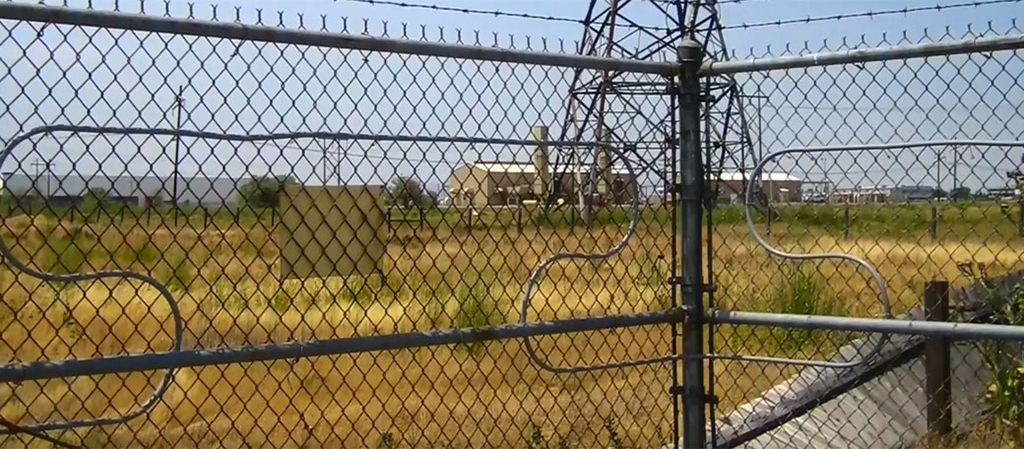Boost Your Security With Advanced Fiber Optic Safety And Security Solutions
In a period where safety and security is vital, innovative fiber optic safety and security systems offer a compelling service for boosting safety throughout various atmospheres. What ramifications do these improvements hold for future safety actions?
Benefits of Fiber Optic Safety
Using the benefits of fiber optic technology substantially enhances security systems throughout numerous applications. Among the main advantages is the increased bandwidth ability, permitting for the transmission of large amounts of data at high rates. This is specifically important for real-time video clip security, where high-resolution feeds can be sent out without latency, guaranteeing instant response capabilities.
Additionally, fiber optics show remarkable resistance to electro-magnetic interference, which is important in settings with potential signal disturbances. This dependability makes certain consistent performance in essential protection operations. Moreover, fiber optic wires are less susceptible to tapping and unapproved access compared to typical copper circuitry, thus improving information stability and privacy.
Another remarkable advantage is the durability of fiber optic systems; they are more immune to environmental aspects such as dampness, temperature changes, and destructive substances. This strength translates to decrease upkeep prices and longer life expectancies for safety setups.
Finally, the lightweight nature of fiber optic cable televisions facilitates simpler installation and transmitting, particularly in complicated frameworks (fiber optic security system). Eventually, the assimilation of fiber optic technology into security systems not only strengthens protection steps however additionally maximizes operational efficiency
Key Functions to Think About
When reviewing fiber optic protection systems, numerous essential attributes have to be taken into consideration to ensure ideal performance and efficiency. Analyze the system's discovery array and sensitivity; an extensive range allows for keeping an eye on large areas, while high level of sensitivity ensures that even small disturbances are identified immediately.
Next, think about the assimilation capacities of the system. A fiber optic security system need to flawlessly interface with existing security measures such as cameras and alarm systems, creating a cohesive protection network.
Sturdiness and environmental resistance are also crucial features. Guarantee that the system is designed to withstand extreme weather and possible physical dangers, as this will extend its functional lifespan.

Finally, explore the scalability of the system. A durable fiber optic security system ought to be quickly expanding to accommodate future requirements without substantial overhauls. By carefully considering these features, you can select a fiber optic safety solution that improves safety and security and protection in your setting.
Installation Process Review
To effectively carry out a fiber optic safety system, a methodical setup process is necessary. This process begins with a thorough website analysis to identify the details safety demands and to determine optimum click this locations for fiber optic wires and protection tools. Following this assessment, the setup team will certainly create an in-depth plan, including cable pathways, necessary equipment, and compliance with regional policies.
Following, the setup includes laying the fiber optic cable televisions, ensuring they are safeguarded from ecological factors and physical damage. Correct handling strategies are important, as fiber optic cords are sensitive and can be easily harmed. After the cabling is installed, adapters and terminations are carefully finished to make sure signal stability.
The succeeding phase contains mounting safety and security tools such as video cameras, motion detectors, and alarm, all integrated with the fiber optic network. Rigorous screening is carried out to validate that all elements are working correctly and to guarantee ideal performance.

Comparing Fiber Optic to Traditional Equipments
The advancement of security technology has actually brought about significant advancements in the comparison in between fiber optic systems and standard copper-based systems. Fiber optic systems use light to send information, offering remarkable transmission capacity and rate compared to their copper equivalents. This results in boosted information transmission abilities, making optical fiber perfect for high-resolution video surveillance and real-time tracking.
Furthermore, fiber optic cables are resistant to electro-magnetic interference, reducing the possibility of signal destruction brought on by external factors. This characteristic ensures consistent performance, also in challenging settings. In comparison, traditional copper systems are much more at risk to interference, leading to prospective vulnerabilities in security applications.
Resilience is one more advantage of fiber optic systems. They are much less prone to damage from environmental elements such as dampness and temperature changes, which can jeopardize copper wiring. Additionally, optical fiber are lighter and thinner, enabling for easier installment and lowered physical footprint.
However, conventional systems have a tendency to have reduced initial costs, making them appealing for budget-conscious projects. While fiber optic internet systems might call for a higher in advance investment, their lasting advantages-- such as lower maintenance expenses and greater integrity-- frequently exceed the first this post expense, positioning them as a premium selection for modern safety and security demands.
Future Fads in Safety And Security Modern Technology
Arising fads in safety and security innovation are poised to transform the landscape of surveillance and risk detection - fiber optic security system. As organizations increasingly face innovative dangers, advancements such as synthetic intelligence (AI) and artificial intelligence (ML) are coming to be essential to security systems. These modern technologies improve the ability of fiber optic systems by enabling real-time data evaluation, identifying abnormalities, and automating actions to prospective breaches
Furthermore, the assimilation of the Net of Points (IoT) is transforming safety frameworks. IoT tools can offer extensive situational recognition and facilitate smooth interaction between various protection elements. This interconnectedness enables for extra efficient surveillance and faster event feedback times.
Biometric verification is likewise gaining momentum, providing a greater degree of safety with one-of-a-kind physical features. As this innovation advances, it is most likely to be incorporated right into fiber optic systems for improved access control.
Final Thought
To conclude, advanced fiber optic safety and security systems represent a significant innovation in security and surveillance innovation. Their premium bandwidth, resistance to interference, and sturdiness facilitate trustworthy surveillance and information stability. As these systems incorporate AI and IoT capabilities, they improve the overall protection framework, ensuring durable protection for properties. The shift from traditional systems to fiber optic solutions reflects a growing pattern towards extra reliable and efficient safety and security procedures in an increasingly complex technological landscape.